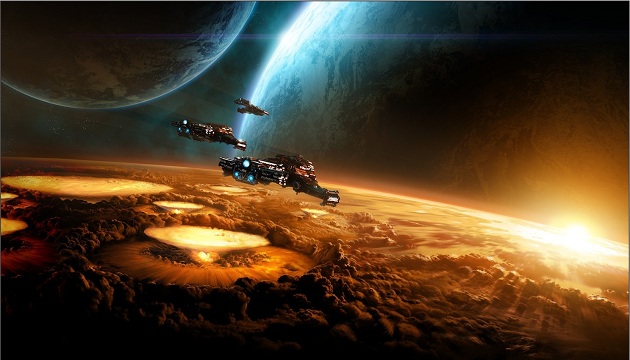The opportunities in the satellite space are mushrooming at an incredible pace in military and defense applications, broadband IP services, and ground- and space- segment products and services. These technologies have accomplished significant breakthrough efficiencies and improvements in performances in very recent times over last decade. However, these advancements have happened simultaneously with vast performance gains by other telecommunication and IT systems.
The Role of Satellites in Day-to-Day Communication
Not many people are aware of the fact that a major part of the day-to-day communication happens through the satellite and not ground cables. There was a time when ground cabling carried a vast portion of communication, but today it is assisted by new satellites, especially geostationary models, helping almost continuous and total global coverage.

Portfolio Manager,
Communication & Devices,
Product Engineering Services,
Sasken Technologies Limited
This almost incessant global coverage assists in the realization of a lot of remote healthcare services, like remote health monitoring, emergency communication, assistance in search or rescue operations, and very recently trend is extended to tele-diagnosis. These along with several other associated services can now be implemented at almost any under-services or remote location on the Earth. This would have been impossible without satellite communications.
Trends in Satellite Communication
- Transmitting Data from Observation Satellites: Several observation satellites have been developed to continuously monitor the Earth for probing the environment and forecasting weather. These satellites possess space radio stations on board using which they collect data and transmit it back to the Earth through feeder links.
- Data Transmission Using Deep Space Probes: The power, volume, and mass of the onboard equipment in deep space probes are strictly limited and so the transmit power and antenna diameter is also restricted. Thus, a high power transmitter and huge receiving antenna are generally equipped in the ground station to compensate for the onboard limitations.
- Communication within the Clusters of Satellites: The functions that are generally carried out by one huge satellite can be allocated to several interlinked and co-located smaller satellites. Each satellite may be assigned with a different function, but on the whole this cluster would act as one huge satellite. Maneuvering synchronization and cooperative control are crucial for maintaining safety boundaries within the colocation slots. LEO satellites monitoring and control systems are controlled using connectivity extended by GEO satellites.
- Internet Broadband Service to Space Planes and Aircrafts: High speed access to internet is possible in several aircrafts today. Similarly, Unattended Aerial Vehicles (UAV), and high altitude platforms are also promising contenders for the optical communication system applications.
- IoT and Connected Car: IoT and Connected car is new GaGa in the satellite industry. Every operator is adding the connected car portfolio as emerging segment.4 LEO satellites: LEO satellite based High Throughput data supply is taking huge momentum to meet the high capacity requirement with low latency
While these are the most important trends, there are few others like the setup of benchmarks depending upon Digital Video Broadcast (DVB), application of inter-platform links and optical inter-satellite, use of Multiprotocol Label Switching (MPLS) in satellite networks and on-board switching application considering quality of service (QoS) ruling the satellite space.
Latency: A Major Challenge to Satellite Communication Advancements
The main challenge faced by satellite communication is latency – delays caused due to switching and distance. This does not matter with broadcasts or web browsing, but it is important where quick communication is needed between consumers who are just few miles (say 3,000 miles) away as an aircraft flies (but more than 70,000 miles apart if the signal bounces through a satellite). It is a matter of great concern for surgeons who are controlling robotic operating equipment during a surgery in another country and it gets quite annoying in video conferences. Also for ADAS domain the satellite communication is not suitable as it needs very low latency.
Future of Satellite Communication
Forecasting the future is uncertain in Science. Nonetheless, in the satellite space, there’s a trend for ever-increasing flexibility, capacity, and service availability in addition to increasingly lighter, more compact, more affordable, and ergonomic personal and ground terminals.
In future, satellite communication is most likely to find applications in satellite-oriented air traffic management, customized land mobile radio broadcasting, and aeronautical satellite communication. It is justified to expect incessant gains with respect to intelligent space communications systems. Noteworthy new technologies are yet to be developed in the satellite communication space.
As the world economies turn out to be increasingly global and as all global parts, the atmosphere, and the oceans are exploited by mankind, the need for efficient wireless interlinks through satellite and terrestrial wireless communication will expand. Furthermore, the increase usage of space systems (planetary, manned, and unmanned bodies) will give rise to the need for enhanced space communication systems.
The future of the satellite communication space depends upon how successful the present satellite networks are. Seamless inter working with terrestrial core networks and terrestrial wireless access networks is of utmost significance for the satellite networks’ success. With revolutionary advancements in satellite communication, it’s possible to bring several space-age fantasies to life.








